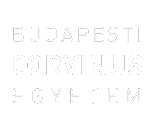Bakondi, Flóra (2020) The Role of Context in Art Viewing Behavior: An Eye Tracking Experiment In The Belvedere Museum. TDK dolgozat, BCE, Kommunikációelméleti szekció.
|
PDF
- Requires a PDF viewer such as GSview, Xpdf or Adobe Acrobat Reader
783kB |
Absztrakt (kivonat)
The ‘natural habitat’ of the artworks is the museum or the gallery. The way art is displayed in the exhibition space is a crucial part of how it is perceived. This study aims to find 1) a relationship between visitors’ eye-movement data and self-reported measures of comfort; 2) the narratives that dominate visitors subjective report of their time in the museum. To these questions the data from the Belvedere Before and After experiment is used; it is a large research project around the rearrangement of the permanent collection of the Austrian Gallery Belvedere, recorded with wearable eye-trackers. The results of the quantitative analyses are mixed. Only text readability was found to have an effect based on the eye-tracking measurements, but self-reported data did not confirm this assumption. The self-reported comfort with the museum space did not predict individual viewing time. In the qualitative analyses I identified five dominating topics in the narratives: the effects of 1) fame (the ‘van Gogh effect’); 2) overmarketing; 3) interpretive labels; 4) museum space features; 5) selfrelated memories. Finally, further research options are discussed.
| Tétel típus: | TDK dolgozat |
|---|---|
| További információ: | 2. díj |
| Témakör: | Kultúra, közművelődés, sport Pszichológia |
| Azonosító kód: | 13142 |
| Elhelyezés dátuma: | 19 Nov 2020 13:14 |
| Utolsó változtatás: | 19 Nov 2020 13:14 |
Csak a repozitórium munkatársainak: tétel módosító lap

